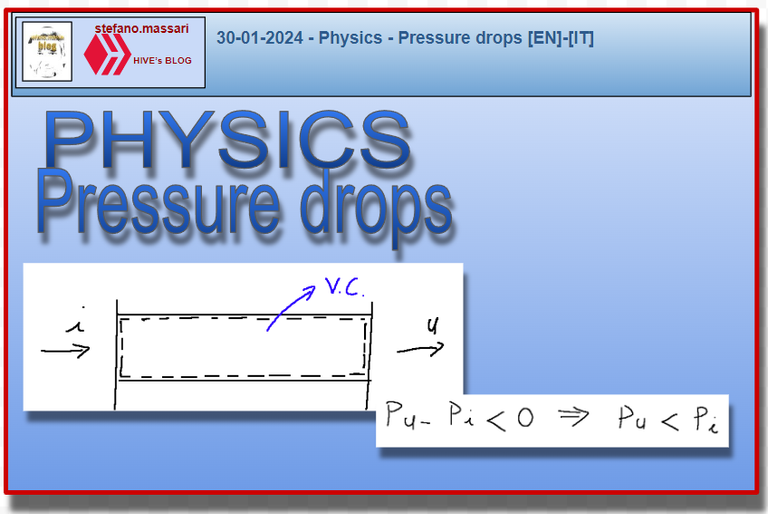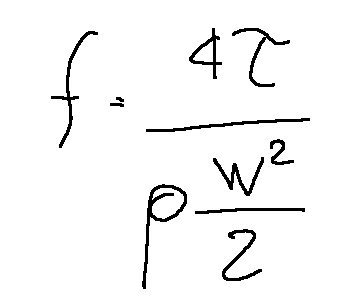
~~~ La versione in italiano inizia subito dopo la versione in inglese ~~~
ENGLISH
30-01-2024 - Physics - Pressure drops [EN]-[IT]
Technical Physics
Basic concepts
The change in energy that occurs following a transformation in a thermodynamic system represents the internal energy of a thermodynamic system.
Usually the variation of internal energy in physics is represented with the letter U.

Pressure drop
Pressure drops in a liquid are always present as they depend on various factors, some of which I list below:
-Hose length
-Pipe diameter
-Fluid velocity
-Gravity acceleration
Let's imagine we have a duct with a constant section through which a liquid passes.

From the mechanical energy equation in the stationary case with one inlet and one outlet we can deduce that the pressure decreases along the duct.
Recall that the flowing medium is a perfect liquid so ρ = 0
Starting from the equation cited above

we can eliminate the following factors

We will therefore have the following simplified formula

From this last relationship we can deduce that the pressure decreases along the duct

Note
On this site there is a useful section for doing exercises
https://www.edutecnica.it/macchine/carico/carico.htm
Conclusions
In a pipeline, the pressure drop is the pressure difference between the inlet section and the outlet section of the pipeline.
Request
Have you ever done calculations to calculate the pressure drops in the pipes?

30-01-2024 - Fisica - Perdite di carico [EN]-[IT]
Fisica tecnica
Concetti base
La variazione di energia che si verifica in seguito ad una trasformazione in un sistema termodinamico rappresenta l'energia interna di un sistema termodinamico.
Solitamente la variazione di energia interna in fisica viene rappresentata con la lettera U.

Perdita di carico
Le perdite di carico in un liquido sono sempre presenti in quanto dipendono da diversi fattori di cui ne elenco alcuni qui sotto:
-Lunghezza del tubo
-Diametro del tubo
-Velocità del fluido
-Accelerazione di gravità
Immaginiamo di avere un condotto a sezione costante in cui passa un liquido.

Dall'equazione di energia meccanica nel caso stazionario con un ingresso e un'uscita possiamo ricavare che la pressione diminuisce lungo il condotto.
Ricordiamo che il mezzo che fluisce è un liquido perfetto quindi ρ = 0
Partendo dall’equazione citata sopra

possiamo eliminare i seguenti fattori

Avremo quindi la seguente formula semplificata

Da quest’ultima relazione possiamo derivare che la pressione diminuisce lungo il condotto

Note
In questo sito c'è una sezione utile per fare anche degli esercizi
https://www.edutecnica.it/macchine/carico/carico.htm
Conclusioni
In una condotta la perdita di carico è la differenza di pressione tra la sezione d’ingresso e la sezione di uscita della condotta.
Domanda
Avete mai fatto dei calcoli per ricavare le perdite di carico nelle tubazioni?
THE END

